If you’re wondering how to start a profitable blog, then you’ve come to the right place.
Whether you’re looking for your new side hustle or you’re aiming to create a six-figure (or more) income while working from home, blogging is a fun, creative, and profitable option.
There are countless ways to make money blogging, but the first step is of course actually getting your blog started.
The goal of this guide on how to start a profitable blog is to teach you how to do just that…in under 30 minutes.
That’s right, it doesn’t have to take days, months, or years for you to learn how to start a profitable blog.
I’ll take you through my proven process step-by-step, sharing an easy, actionable plan to get your blog up and running and ALSO how to get started making money.

Sound too good to be true?
Learning how to start a profitable blog in under 30 minutes sound too good to be true?
I promise, it’s not.
When I started blogging in 2014, it only took me a few months to earn my first $100 from a sponsored post.
I had under 1,000 Instagram followers at the time and only a few thousand pageviews per month on my new website, but I was still making money from my blog.
A few months later, that $100 turned into $200, that $200 into $300, and so on.
If I had known what I know now?
I could’ve done it even sooner!
So, let’s get started.
This post may contain affiliate links.

How to Start a Profitable Blog in Under 30 Minutes
1. Choose Your Blog Niche
The first step in starting a profitable blog is choosing your blog’s niche.
This niche will be the core topic of your blog and will guide both your future blog posts and your brand identity moving forward.
While your niche can really be any topic that you’re interested in, if you’re looking to make money from your blog it’s important that you choose a niche that a) other people are interested in, and b) you’re able to make money from.
Some of the most profitable blog niches include:
- Personal Finance
- Health/Fitness
- Parenting
- Food
- Making Money Online
- Fashion
- Beauty
- Travel
In addition to making sure your niche is profitable, you’ll also want to make sure it’s something that you can envision yourself being interested in for a long time.
There’s no faster route to blogger burnout than forcing yourself to cover a topic you don’t actually enjoy!
Plus, part of building a profitable blog is establishing yourself as an expert on your subject.
That’d be pretty hard to do if you’re choosing a topic just because you think it will make you money, instead of choosing a niche that you’re actually passionate and knowledgable about.
Related: 10 Actionable Ways to Grow Your Blog
2. Pick a Blog Name
One you have your niche established, it’s time to choose a blog name! You’ll want to think of something catchy and that will be easy for people to remember.
Make sure there’s no strange spellings of any words either, as you want to make it as easy as possible for readers to make their way back to your site.
You’ll also want to choose a blog name that you can use a .com domain with.
Again, this is easy for people to remember and encourages people to return to your blog again and again.
And once you find a blog name you like?
Run it through the domain checker below to see if it’s available!
3. Sign Up For Hosting & Register Your Domain Name
One of the biggest mistakes I made when I started blogging was not correctly setting up a self-hosted WordPress website.
There is a massive difference between wordpress.com and wordpress.org, so make sure you keep reading to find out how to set this up properly.
Also, you might be thinking about starting out on a free site like Blogger.
Don’t.
Seriously, just take my word for it.
I didn’t start my blog in 2014 with a self-hosted WordPress website, and it was a HUGE pain trying to get everything transferred over correctly when I realized I needed to migrate to a professional blogging platform.
If you want to blog for more than a hobby and eventually make a steady income online, a self-hosted WordPress website is the only way to go.
So, the first thing you need to do?
Sign up for hosting with Bluehost.
Bluehost is one of the most affordable hosting companies out there, enabling you to start a blog for as little as $3.95 per month.
I think this is a really awesome deal, and it’s especially great for people just getting started with blogging.
I’ve used Bluehost for several years now though, and the main reason that I recommend them is because of their outstanding customer support.
Bluehost representatives have sat on the phone with me for literal hours helping me sort out tech problems (that were completely my own fault!).
They also have 24/7 live chat support, which is such a great resource.
To sign up for your hosting plan, just follow the instructions below.
Get to the Bluehost Platform
The first step of starting a blog with Bluehost is easy. Make your way to the Bluehost website.
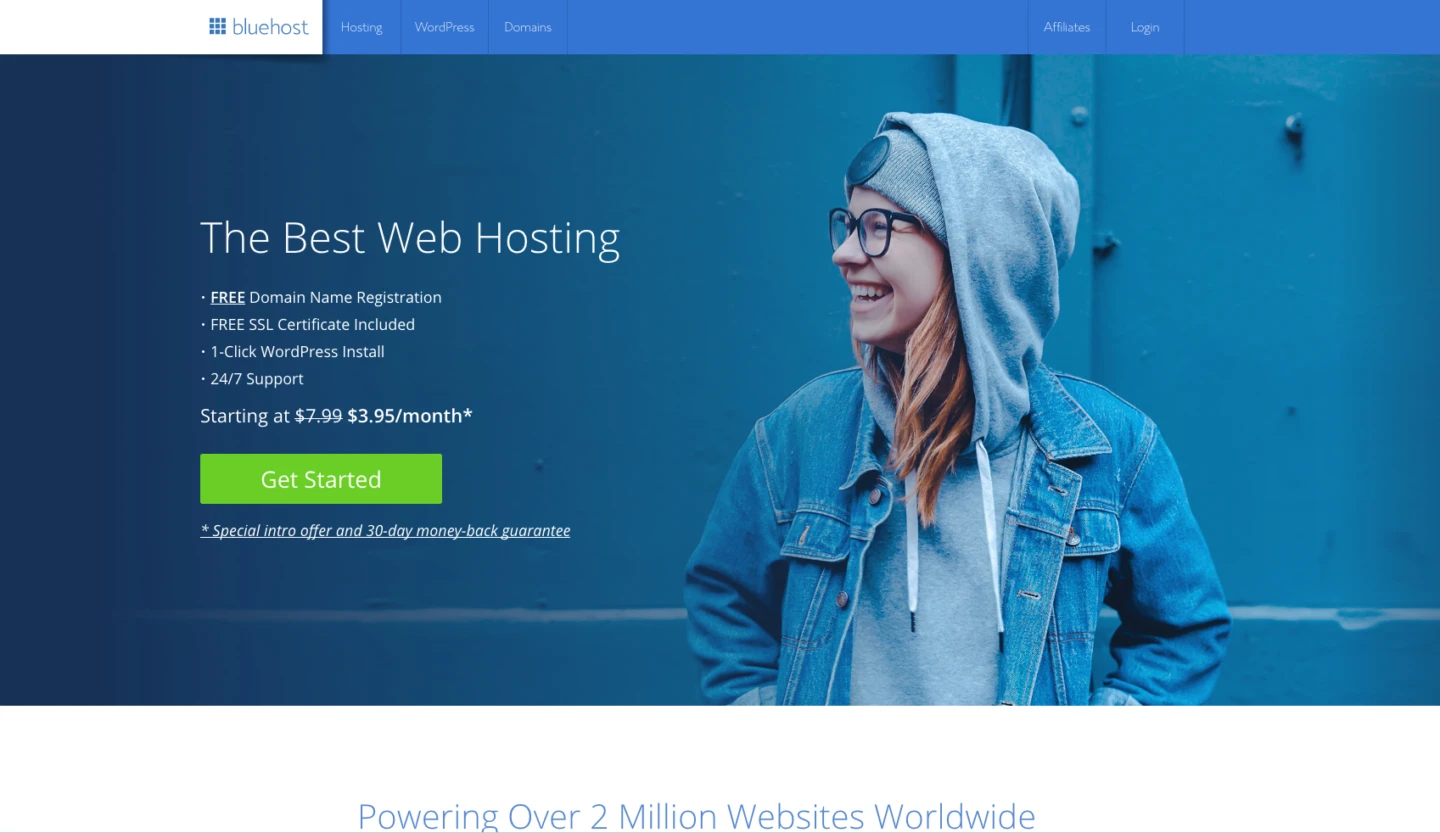
Select Your Plan
Selecting a plan with Bluehost is easy, too.
If you’re a beginner blogger, just choose their “Basic” offering at $3.95 per month.
It’s all you’ll need to get started (it’s all I’ve ever needed), and you can always upgrade later.

Claim Your Domain Name
The time has come! Register for your domain name (a.k.a. your URL).
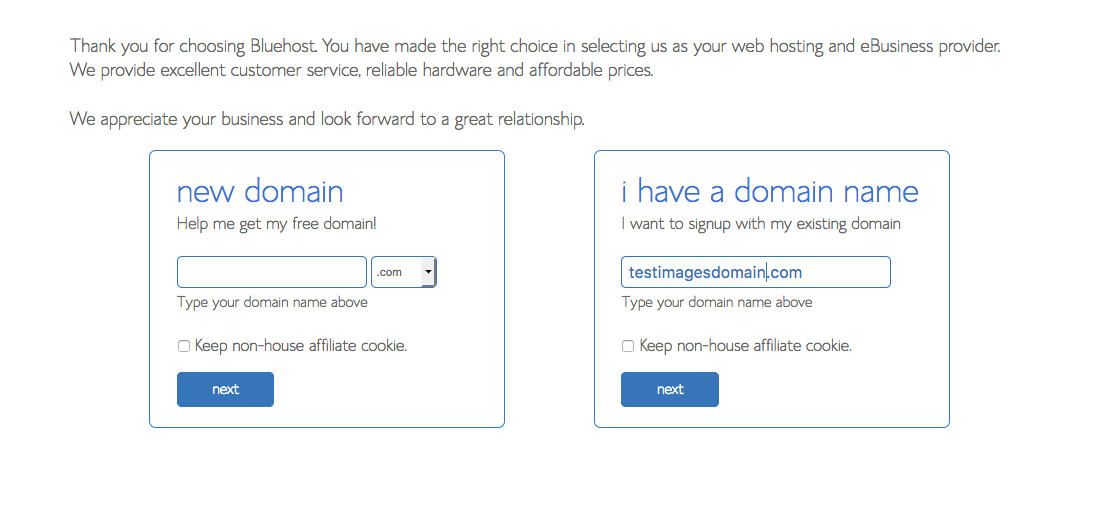
Enter Your Account Information
Enter all your information for your new Bluehost account.

Choose Your Plan
Make sure you choose the 36 month plan to get the best price!
You’ll also want to add in Domain Privacy Protection.
All domains have a WHOIS listing and, without this feature, all of your private information is available to the public.
It’s 100% worth the extra $.99 per month to have that protection.
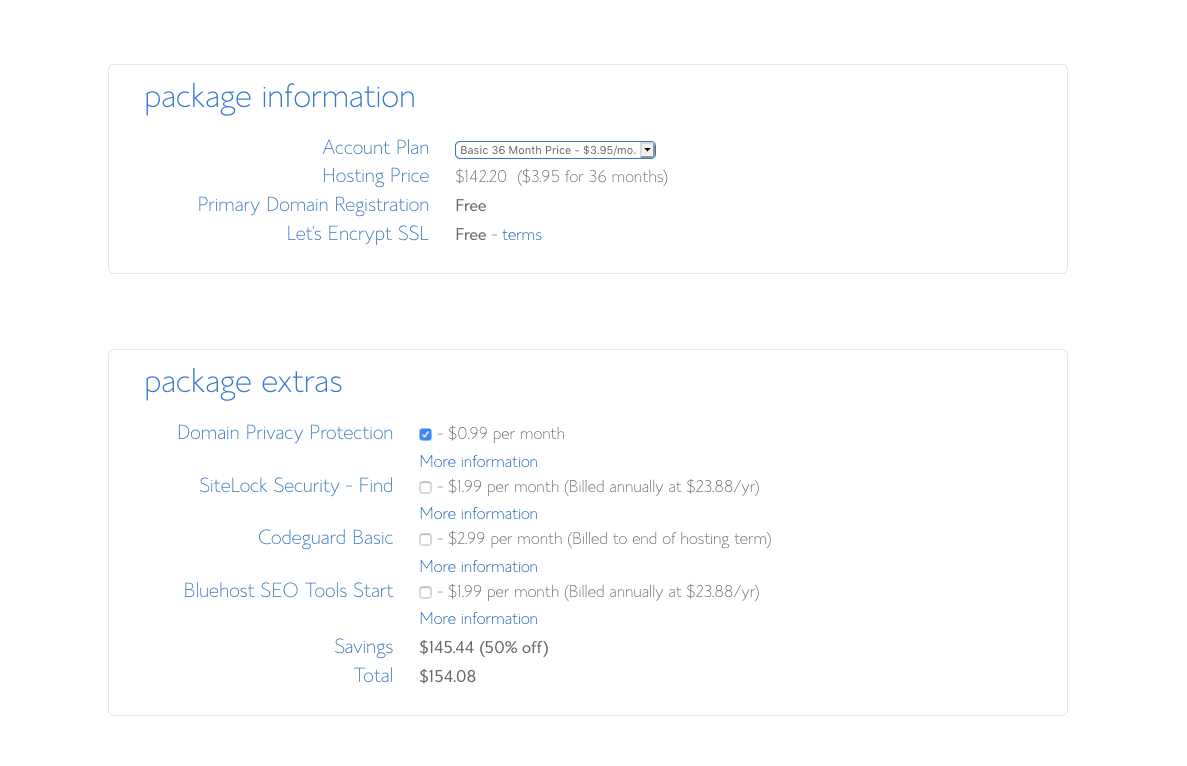
Enter Your Payment Information
So close!

Choose a Password
Last step? Choose a password for your account.

Login to Bluehost & Choose a Temporary Theme
Time to login to your new Bluehost account!
Now go ahead and pick a theme for your website.
WordPress has plenty of free themes available for you to choose from, and you can install a premium WordPress theme (recommended) later once your site has been fully set up.
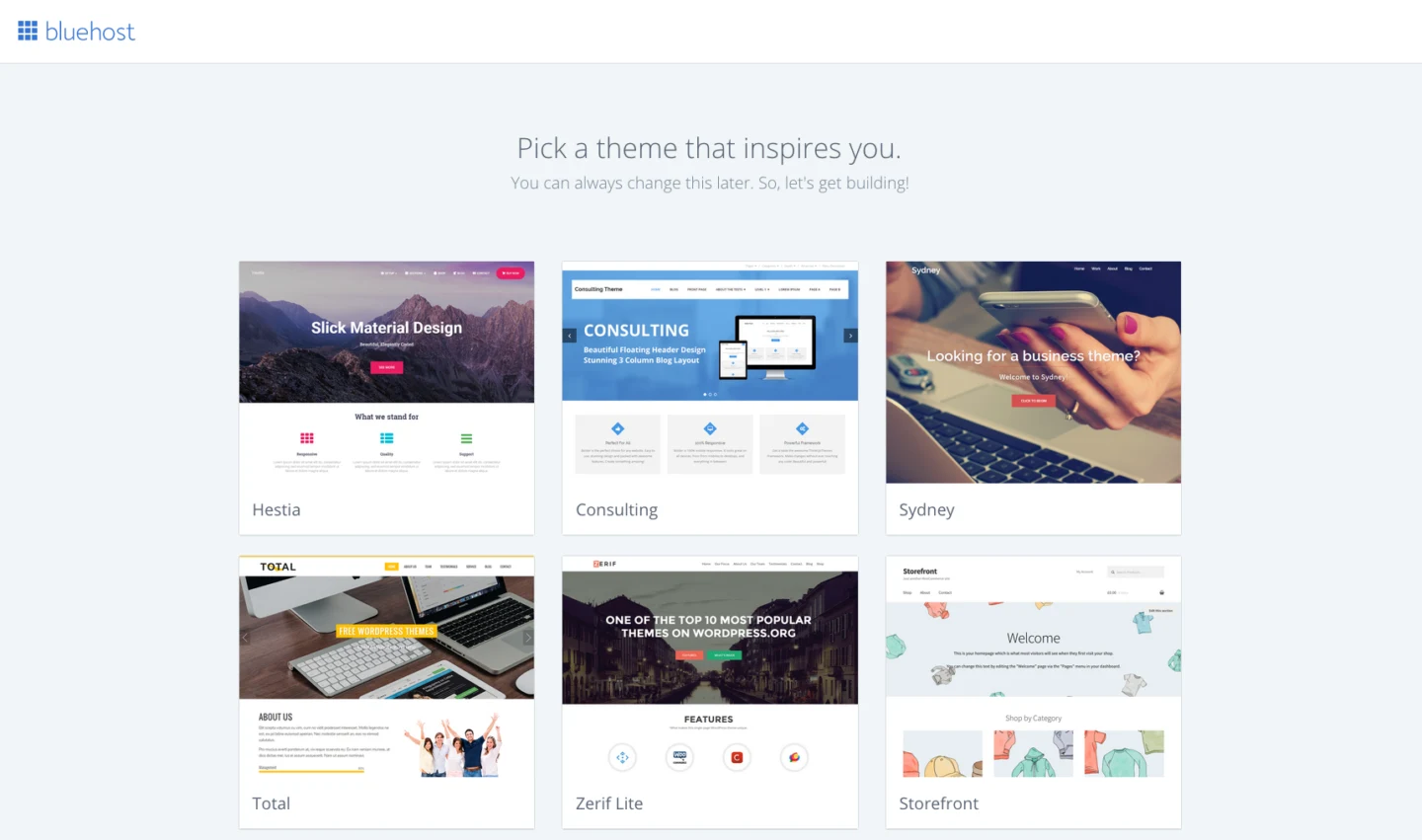
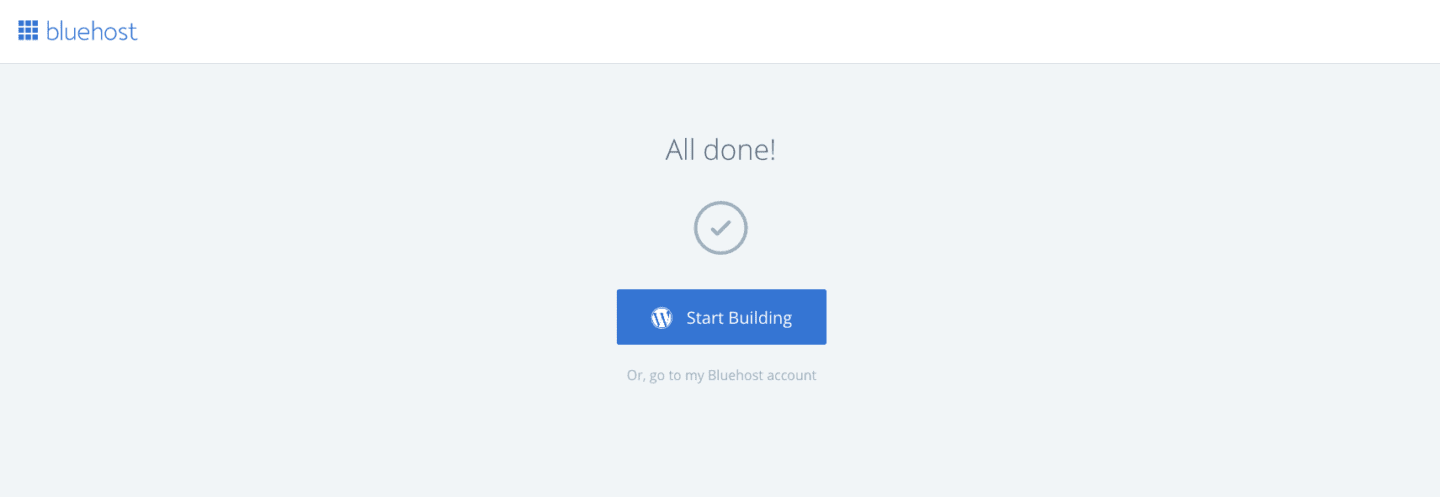
Customize Your Site
Your new blog is almost all set up!
The next step is simply to customize your website and make it your own before launching.
You can customize your settings under the “Appearance” tab on the left hand side of your WordPress dashboard.
Simply hover over “Appearance”, and select “Customize” when the tab pops up.
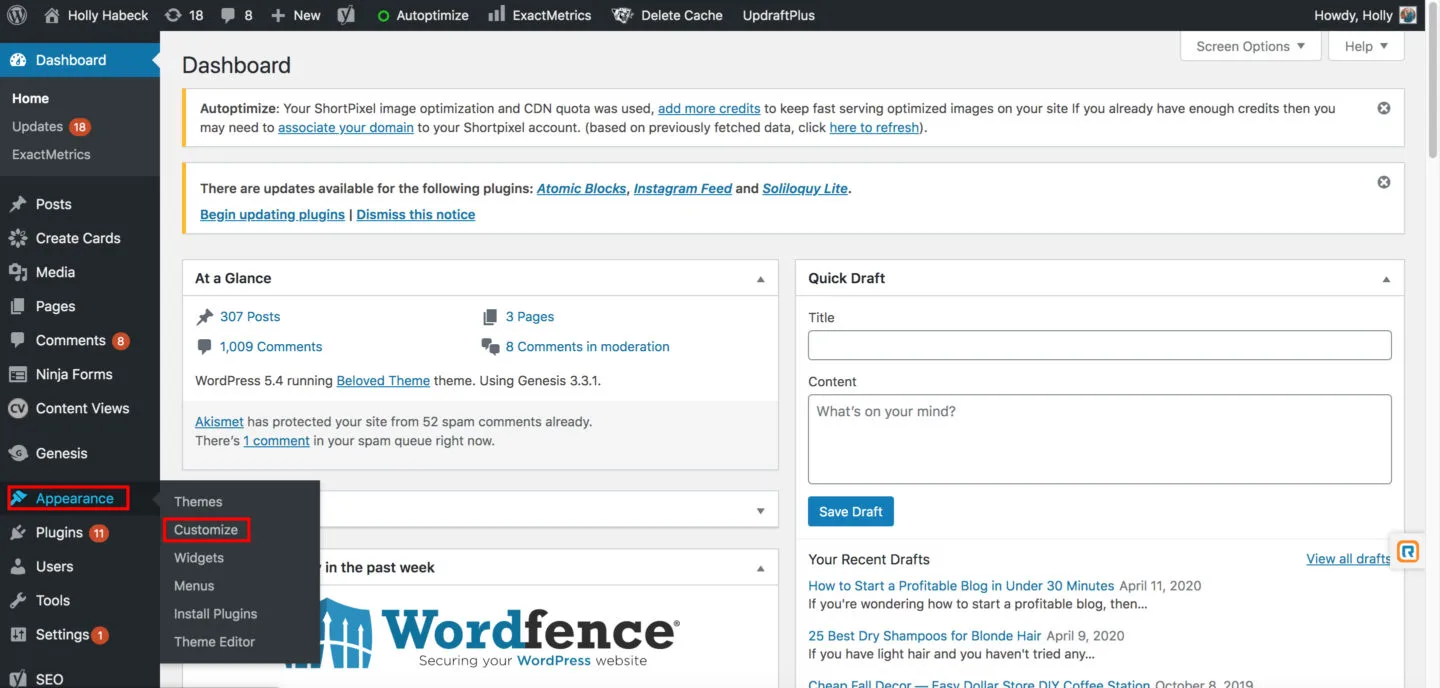
The options for customization will be different depending on which theme you’ve chosen for your site.
Some of the most common options for customization though include changing colors, fonts, and sidebar position (if your theme has one).
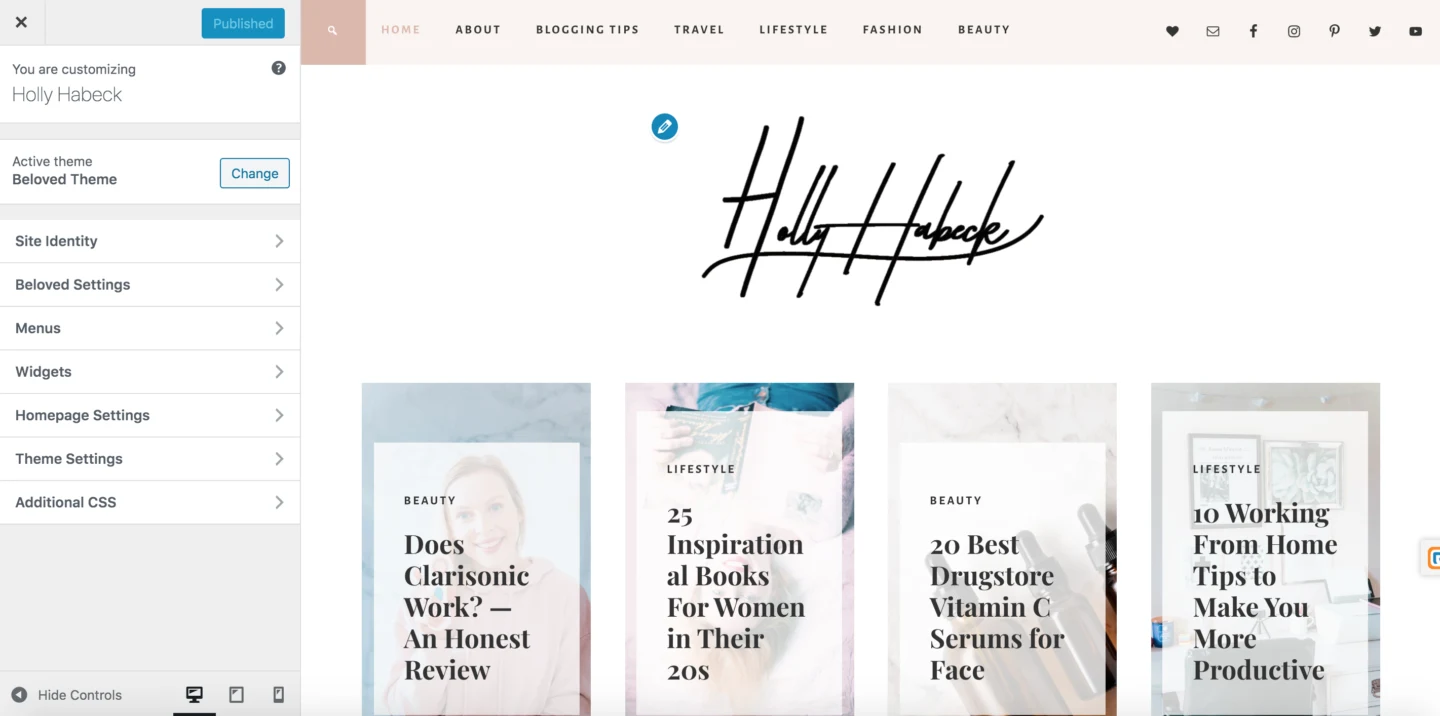
Pro Tip: Looking for a theme that really pops? Check out my favorite premium WordPress themes here. They’re easy to install, customize, and really set a professional tone for your brand.
After you complete your customizations, you’ll again hover over the “Appearance” tab on the left hand side of your dashboard and this time click on “Widgets” when it pops up.
The widgets section of your site allows you to make further customizations to items on your blog like sidebars.
You can add images, social media links, etc. here.
Keep in mind, how many spots you have available on your site for widget placement will depend on the theme you’re using.
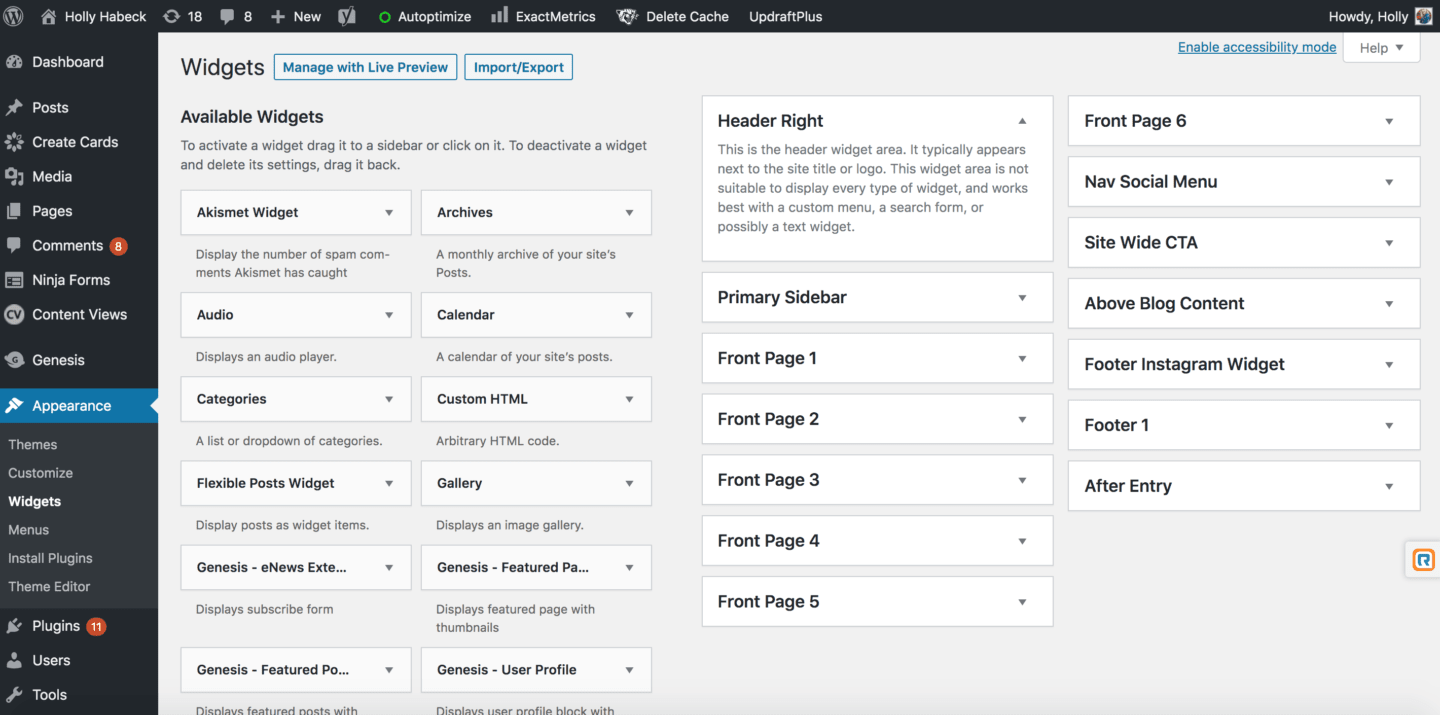
Last but not least, make sure you go back to the “Appearance” section and click on “Menus”.
This is where you can customize your main navigation for your new site.
You probably don’t have anything to actually put on your menu bar yet since we haven’t created any pages.
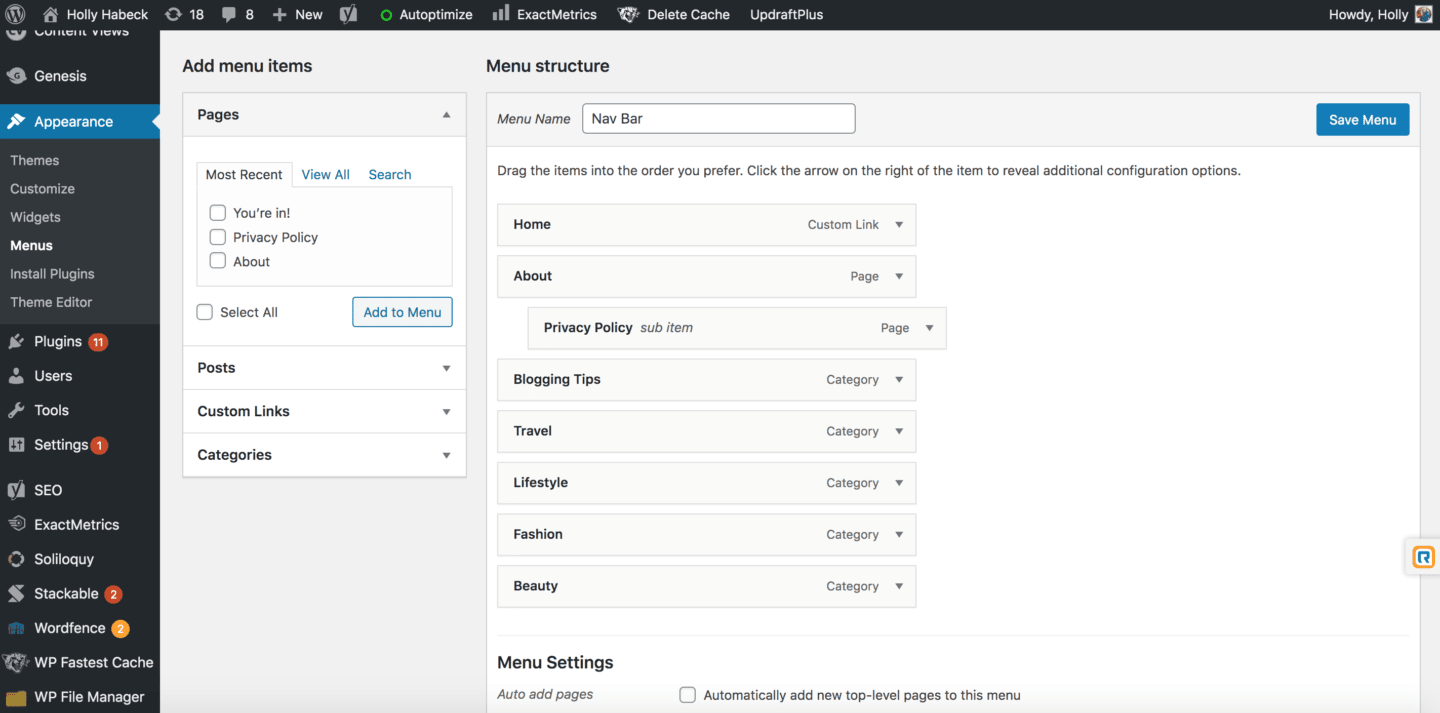
You can do this by going to the “Pages” tab, and clicking on “Add New”.
I’d recommend creating two pages to start with — your “About Me” page, and your “Contact” page.
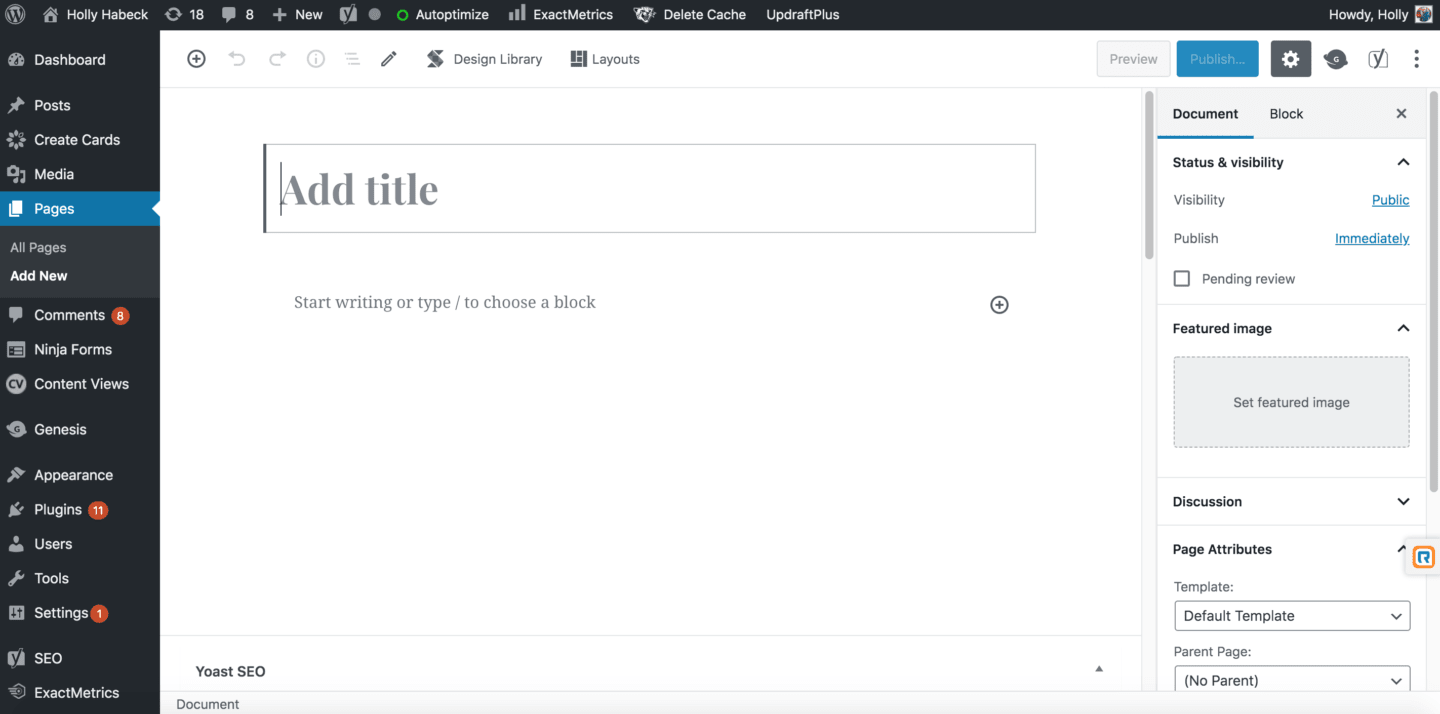
Once you’ve created these pages you can go back and add them to your main menu bar.
You can also add categories to your menu bar as well, but you can come back and do this later once you’ve got some blogs posts live and have created categories for them.
Install Plugins
Another thing you can do is install free plugins for your WordPress blog, which can do all sorts of things like help your blog load faster, create a popup so you can collect newsletter subscribers, and more.
You can install new plugins by hovering over the “Plugins” section and clicking on “Add New”.
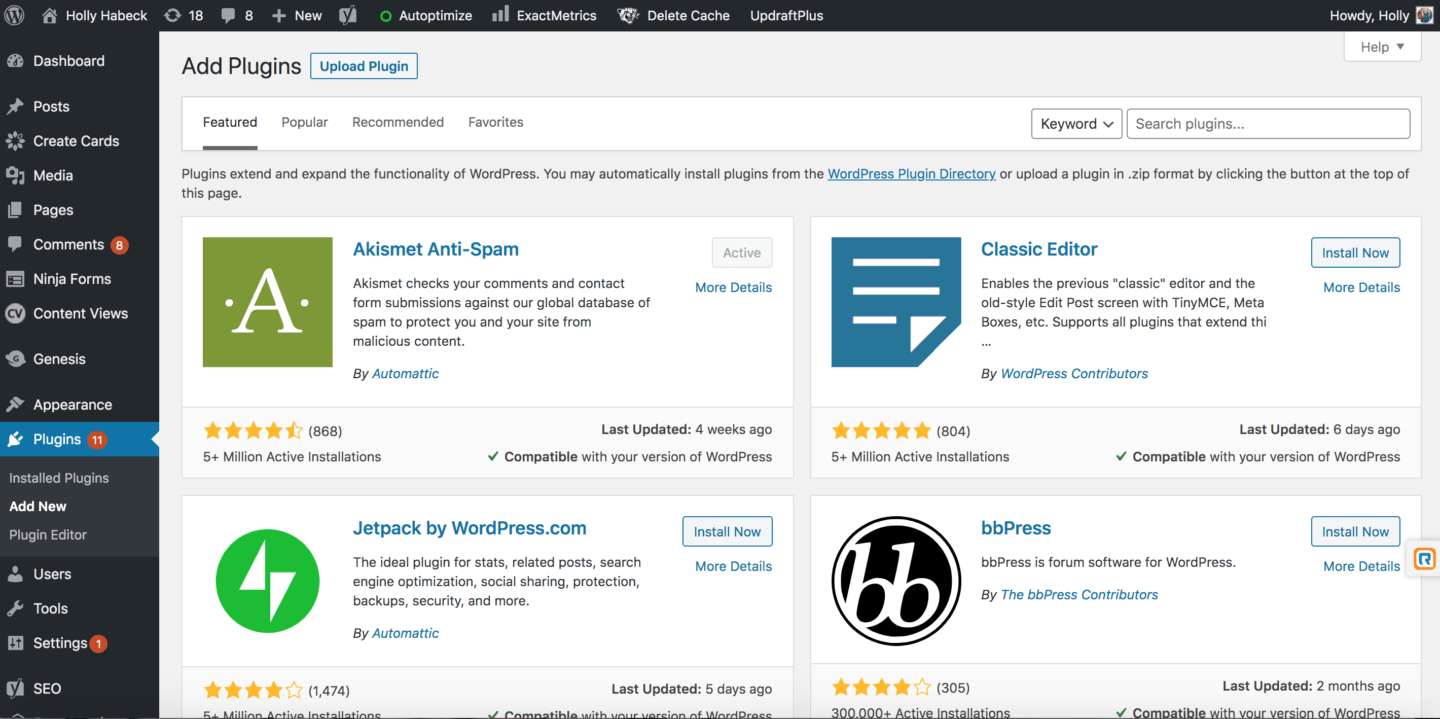
Some of my favorite free WordPress plugins include:
- Autoptimize (helps your site run faster)
- UpdraftPlus (auto backs up your site to an external source like Google Drive)
- Yoast SEO (easy to use tool to help you with search engine optimization [a.k.a. how to get your posts to show up in Google search and get more traffic to your blog])
- Google Analytics (connects with your GA account to monitor your website traffic and provide important data on how people are using your site)
Launch Your Blog
Finally, it’s time to launch your site!
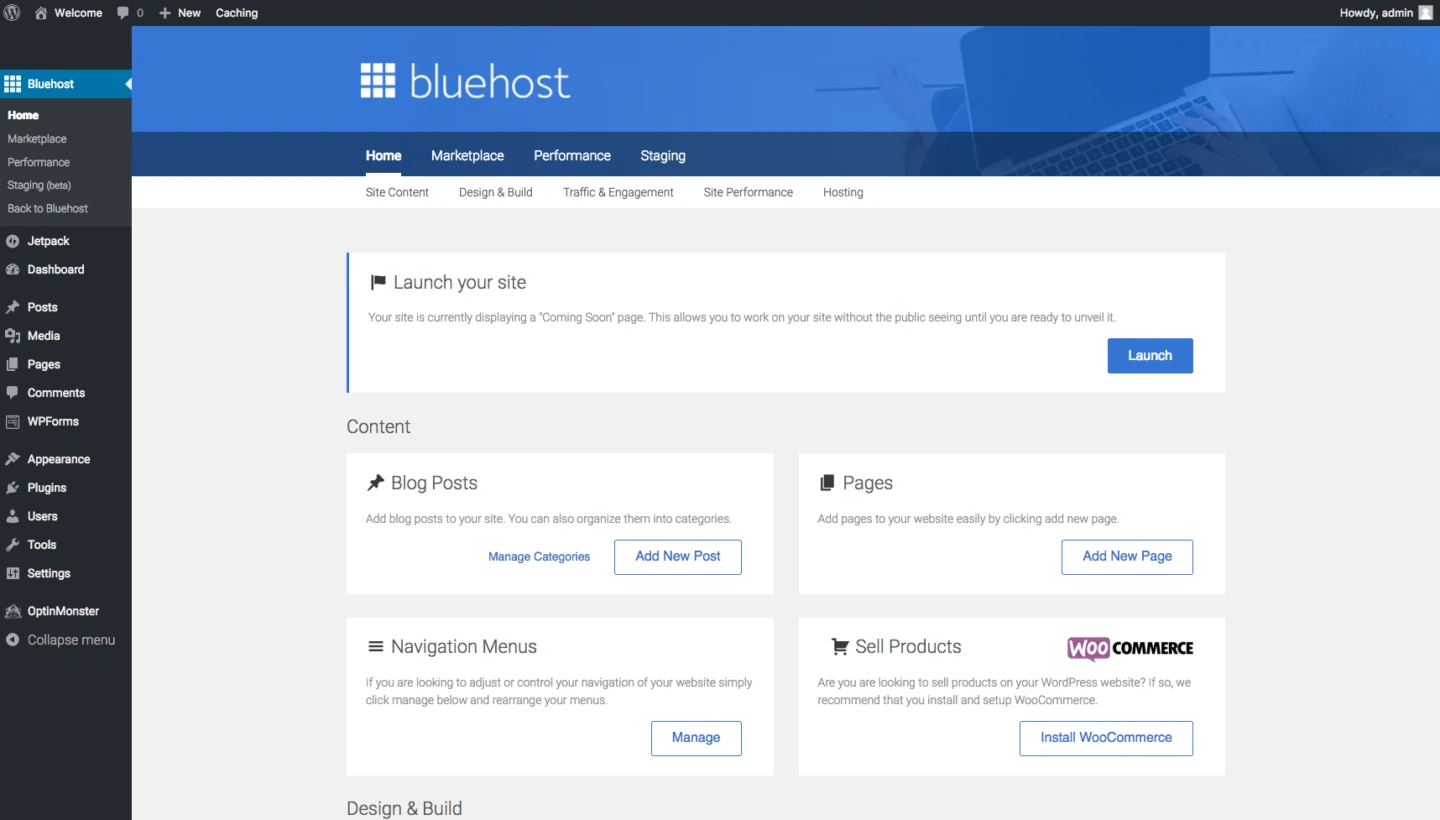
Related: 5 Ways to Protect Your Content as a Blogger
4. Start Blogging
Once you have your website set up and live, it’s now time to start publishing blog posts.
The best way to get traffic to your new site is to write high-quality content that provides maximum value to the reader.
If you’re wondering what types of posts you should write for a profitable blog, there are many.
Some of my favorites though include listicles, how-to articles, product roundups, and reviews.
You’ll want to avoid posting too much personal content, as this doesn’t really provide any value to your readers and won’t gain a lot of traction on Google or social media.
Instead, it’s best to write articles on topics that readers are already searching for.
For more tips on boosting your blog traffic, keep reading.
We’ve got a whole section that covers that below, but first let’s cover how you’re actually going to make money during your blogging journey.
5. Monetize Your Blog
After you have some posts live, it’s time to start monetizing your blog.
While there are many ways to monetize your site, my favorite ways are through sponsored posts, advertising, and affiliate marketing.
Let’s breakdown how you can use each of these strategies to make money from your blog.
Sponsored Posts
Sponsored posts are one of my absolute favorite ways to make money blogging, because I get to try products from brands I already love and also be creative in producing content to promote them.
Sponsored posts can also pay incredibly well, especially if you develop a process for creating them.
For example, sometimes it’ll only take me a few hours to complete a sponsored post…but the pay for that work will be $500 (just an example, as every campaign is different depending on the deliverables).
When you break that payment down to an hourly rate, it’s pretty incredible.
Breaking into the sponsored post scene can be a little tough though, especially for a new blogger.
However, I’ve built a totally FREE course to help you get started.
I’m including all of my favorite sponsorship networks, plus tips for actually getting selected for sponsorships, earning higher payouts, etc.
Just sign up with your email below if you’d like to access the free 7-day course!
7 Days to #Sponsored — FREE 7-Day E-Course
If you sign up for the course, just keep an eye out for the welcome email which will tell you how to get started with the course content.
Sometimes these emails get caught up in SPAM filters, so keep your eyes peeled and make sure you whitelist hhabeck1@gmail.com since that’s where we send the course emails from!
Advertising
Another one of my favorite ways to make money from blogging is through advertisements.
These are the ads that you’ll see in my sidebar, at the bottom of my page, and within many of my blog posts.
If I’m being honest with you, I was extremely resistant to advertising when I first started blogging.
A few big-name bloggers that I followed at the beginning of my blogging journey claimed that having ads on a blog was tacky and off-brand.
I took their opinion way to seriously, and it cost me literally thousands if not tens of thousands of dollars in revenue I could have earned if I had implemented ads earlier on my site.
My biggest recommendation for you in how to start a profitable blog is to get as much traffic as you can to your new website so that you can qualify for Mediavine.
For those of you who are not familiar with Mediavine, this is the full-service ad management company that I work with.
To apply to Mediavine, you need to first have 25,000 monthly sessions on your blog (you can check this within your Google Analytics account).
This is to ensure that you’ve built up an audience that is interested in your content and that placing ads on your site is actually going to be worth it for you in terms of the money you’ll make.
In my opinion, having ads on your blog isn’t really worth it if you’re only making $10 a month.
While it’s still something, it’s not worth hindering the reader experience for such a small amount of money.
This is why I generally don’t recommend putting ads on your website until you can qualify for Mediavine or an ad company like Mediavine.
While 25,000 sessions can sound like a lot to someone who’s just starting out, don’t worry.
We’ll talk about a few strategies to boost your blog traffic later in this guide!
Affiliate Marketing
One of the most immediate ways to you can start a profitable blog off the bat is by learning and implementing affiliate marketing on your site.
Affiliate marketing is where you link to certain products on your site, and you receive a commission if a reader clicks on your link and makes a purchase.
You don’t need a massive audience to get started with affiliate marketing, so this is a great first step to creating a profitable blog.
After all, it’s as easy as using your specific affiliate links in your content for products you’d probably be recommending anyways.
If you’re interested in learning more about affiliate marketing, I’d strongly recommend going to one of the most well-known experts on the subject — Michelle, from Making Sense of Cents.
From implementing the exact tactics taught in Making Sense of Affiliate Marketing, Michelle went from barely earning anything from affiliate marketing, to making over $50,000 per month!
I’ll be the first to admit that I’m just getting my toes wet with affiliate marketing, but Michelle knows her stuff.
In addition learning more about how to implement affiliate marketing on your site, you may also want to get started by signing up for a few of my favorite affiliate marketing programs like:
- Amazon Associates
- Rewardstyle
- Shopstyle
- Share a Sale
These programs will all enable you to create personalized affiliate links for your website so that you can earn a commission if someone purchases a product using your link.
You can also share these links on social media as well, which is another way to take your affiliate marketing strategy to the next level.
Related: 5 Unexpected Things I Learned in Three Years of Blogging
6. Build Your Traffic
To make your blog profitable, you course need to establish an audience.
Your audience is your bread and butter when it comes to making an income from your blog, so this is important!
For new bloggers wanting to know how to start a profitable blog, I usually recommend focusing on Pinterest as your main way of gaining traction on your new site.
Getting Blog Traffic From Pinterest
Pinterest is not a social media platform — it’s a search engine.
You can have posts go viral on Pinterest without having a bunch of followers thanks to things like group boards, Tailwind Tribes, and also just plain Pinterest SEO.
The best thing you can do to jumpstart your blog traffic though is to join Tailwind.
Tailwind is a scheduling tool that allows you to schedule pins to boards on your Pinterest account ahead of time.
Since Pinterest recommends you post around 15-25 new pins per day, there’s no way you’re going to want to do this manually!
Tailwind allows you to space out your posts throughout the day and schedule content for days, weeks, and even months in advance.
The other cool thing about Tailwind is that you can get access to Tailwind Tribes.
Tailwind Tribes are groups of content creators that all work to support each other and re-pin each other’s blog posts.
When you join a tribe, you’ll have the opportunity to submit your own posts and also share those of other’s in the tribe.
This is a great way to get your content out to people that might not otherwise see it and also plays a role in helping your pins go viral!
Getting Blog Traffic From Google
Getting blog traffic from Google is also another strategy you’ll want to focus on in building your blog audience.
However ranking in Google takes significantly longer than Pinterest, so this is more of a long-term game.
It’s a good idea to read up on search engine optimization strategies now though, so you can start optimizing your blog posts for Google right off the bat.
While SEO might seem intimidating to a new blogger, I promise it’s not really that bad!
It’s definitely something that I wish I would have started with earlier, as I could have a lot more traffic today if I had focused on building this traffic source from the beginning.
To get you started with your research and boosting your SEO, some of the things I recommend looking into include:
- How to choose keywords for your blog
- How to boost your blog’s domain authority (this plays a role in what page your content will rank on in Google)
- How to register for and use Google Search Console to track your blog’s performance in Google search
How To Start a Profitable Blog FAQs
Now that we’ve gone over the basics of how to start a profitable blog, let’s review some of the most common frequently asked questions on the topic.
Are blogs really still relevant in 2020?
Yes, blogs are absolutely still relevant in 2020!
In fact, the influencer industry is on track to be worth $15 billion by 2022.
The blogging and influencing industry has only been growing over the past few years, and that growth hasn’t stalled yet.
Just because you personally don’t read blogs or your friends don’t, doesn’t mean there isn’t an audience out there that does — don’t let consensus bias fool you.
The number of people who read blogs is estimated to reach 31.7 billion in 2020, so trust me there is still a market for your blog.
Is the market too saturated for me to start a profitable blog now?
Because there has been so much growth in the influencer industry over the past few years, there of course has also been many more people interested in starting their own blog.
At some point, a number of popular bloggers started the rumor that blogging is “too saturated” and difficult to break into right now for newcomers to the industry.
This couldn’t be any more untrue.
While lots of people are starting blogs and there are plenty of influencers to choose from to follow, there’s still room to break into blogging.
With more resources accessible than ever before, starting a blog is so much easier than it used to be.
Whether you’re looking for information on boosting your blog traffic, or tips to improve your blog photography, there are so many free and paid resources to help you learn how to start a profitable blog.
It truly has never been more simple, so don’t let the fear of competition keep you from playing the game.
How long will it take for me to start making money from my blog?
While everyone’s blogging journey looks a little bit different, I personally started making money from my blog within the first few months from when I launched my site.
It wasn’t a lot at first and I was only monetizing through sponsored posts at the time (big mistake!), but becoming profitable really didn’t take that long at all.
If you’re producing quality content and steadily building an audience, making money from your blog becomes easier and easier as time goes on.
How much money can you make from a blog?
One of my favorite things about blogging is that the potential income you can make is truly uncapped.
There are bloggers out there that make a couple hundred dollars per month, and there are bloggers who make upwards of $50,000 per month.
It all depends on the structure of your business!
Can I just blog on Instagram, instead of creating my own website?
Short answer? No.
Only having an Instagram instead of a blog is a bad idea for a number of reasons.
The main reason though, is because you don’t own your Instagram account.
Therefore if there’s an algorithm change, your account gets hacked, etc., your income is gone.
That’s not a good business strategy. It’s also never a good idea to put all your eggs in one basket.
Having a website is important as an influencer, because it is a platform that you 100% own and have control over.
You can also earn more money if you have a blog instead of missing out on sponsored blog post opportunities if you only have social media accounts.
Can I start a profitable blog for free?
While starting a blog isn’t particularly expensive, you shouldn’t start a blog on a free platform if you’re trying to learn how to start a profitable blog.
A self-hosted WordPress website is the industry standard for professional bloggers, and it’s an investment you’ll be happy you made in the long run.
There’s so many options to customize WordPress websites, you really can’t go wrong.
Also, please note that WordPress.com and WordPress.org are completely different platforms!
WordPress.com is a free blogging platform that you’ll want to stay clear of if you want to make money from your blog.
WordPress.com’s terms of use state that you’re not allowed to monetize your platform there, so it’s only a reasonable option if you have no intentions of making money from your blog.
Even if you’re blogging just as a hobby though, I’d still recommend signing up for a self-hosted WordPress website.
It’s best to give yourself all the options, especially since it’s only really the cost of a cup coffee per month!
Can I make money blogging about my life?
Many people start a blog with the intention of blogging about their lives.
While there is nothing particularly wrong with this, I wouldn’t start a blog in 2020 that’s centered around your personal life if you’re trying to make money.
Blogs that provide real value to the audience tend to garner the most traffic and make the most money.
That’s why the best kinds of blog posts are how-to guides, listicles, product roundups, reviews, etc.
No one is going to be searching on Pinterest or Google for what you and your family did this weekend, so these kinds of blog posts aren’t really going to help grow your audience.
While you do want to develop a voice with your writing and help your readers to feel more connected with you so they come back to your website, the best thing you can do is to teach them something, provide them with resources, or entertain them.
This what helps build blog traffic and ultimately a real income.
In Conclusion
Starting a profitable blog really isn’t as difficult or time consuming as you might think.
If you work hard and do your research, you really can start making a decent income very quickly.
Overall, I’ve found blogging to be an extremely rewarding career path that has afforded me many opportunities I never would have had if had not began this journey years ago.
If you’re still on the fence about starting a blog, all I can tell you is that I would 100% recommend it!
Pin This Post:

